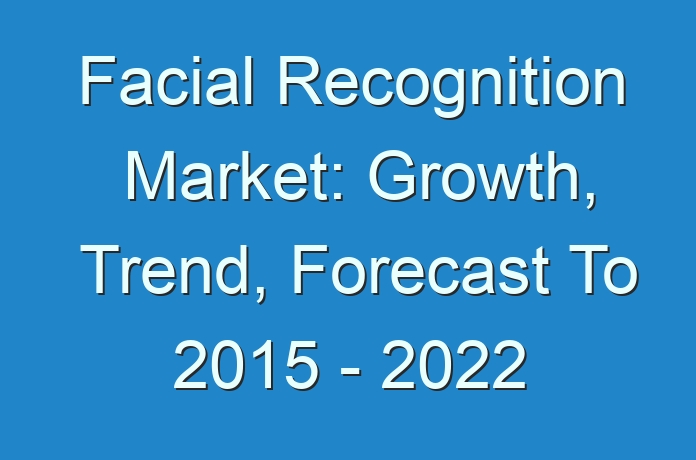
Global Facial Recognition Market – An Overview
A fierce vendor landscape, global facial recognition market is set to grow at a compound annual growth rate (CAGR) of 9.5% from 2015 to 2024. And, players in the market are deploying both organic and inorganic growth strategies in order to lay claim on a large share of the market growth. And, so far a prominent one has been strengthening of distribution network.
Over the forecast period, it is significant to note, that market worth would rise up to touch a higher valuation and at the same time create growth opportunities for its ever increasing number of players.
Some of the factors that are propelling the global facial recognition marker forward are:
- Though it accounted for a 38% share of the total market, in 2014, the North American region will let go a part of it over the forecast period to Asia Pacific, which is set to grow on the back of increase in demand from countries such as China, India, South Korea, and Japan.
- A significant trend that would drive the market forth is the increase in demand for consumer electronics. As need for better security increase, demand for facial recognition increases in tandem. Besides, smart phone technologies advance with incorporation of this feature.
- It is also now adopted and vastly used for border control. Additionally, it is used by law enforcement agencies as a means to authenticate identity. It is also being used in the retail industry and in device such as laptops, and consumers. It will also be used heavily in facial analytics systems.
You will get Custom Report at Syndicated Report price, Buy Now
The global facial recognition market was valued at US$ 1,307.0 Mn in 2014 and is expected to grow at a CAGR of 9.5% from 2015 to 2024. Currently, the market is primarily driven by robust technological advancements for development of efficient surveillance systems required by civil and government agencies. This is due to rising instances of criminal and terrorist activities and identification of fraud cases across the globe. Moreover, facial recognition systems that can scan images in all environmental conditions are being developed using 3D facial recognition technology. This would help overcome the barriers of 2D facial recognition technology that include light and pose deflections of the object. However, restrictions on users to share their personal details i.e. covert monitoring of an individual, is expected to hinder the market growth. Furthermore, increased adoption of facial recognition in web applications for picture tagging, social interaction, and others is expected to drive the demand for facial recognition in future.
The global facial recognition market is analyzed on the basis of parameters such as type of technology, end-use industry and geographic regions. Of the different technology types, the 2D facial recognition technology segment contributed a significant revenue share in the global market in 2014. This is due to the adoption and acceptance of 2D facial recognition technology in surveillance, which is primarily due to its low cost and easy installation using existing cameras. The market for 3D facial recognition technology, that offers better and accurate results, is expected to record steady growth as compared to 2D technology. Furthermore, the facial recognition market is witnessing development of facial analytics systems that help generate descriptive metadata about a given face, apart from simple identification. This has resulted in the use of facial recognition technique as both identification and authentication tools.
Get More Press Releases by TMR: https://www.prnewswire.com/news-releases/automotive-on-board-diagnostics-market-to-present-vast-canvas-for-oems-and-providers-to-capitalize-on-telematics-based-insurance-valuation-projected-to-touch-us-22-bn-by-2031—tmr-301290974.html
Facial recognition technology, primarily used for human face detection and identification helps in better surveillance at a particular location where strict people movement monitoring is required. Thus, this technology has wide acceptance across industry verticals namely government and utilities, military, homeland security, banking, financial services, and insurance (BFSI), retail, and others. In 2014, the government and utilities segment recorded the highest market revenue share as compared to other end-use industries.
Geographically, North America dominated the global facial recognition market in 2014 and accounted for around 38% share of the total market in the same year. Further, the Asia-Pacific region with major markets such as Australia, Japan, South Korea, India, China, Malaysia, and Singapore, is expected to record steady growth as compared to other regions in later years of the forecast period. Other countries such as Mexico, Brazil, and few of the Middle Eastern countries are expected to witness wide adoption of facial recognition technology.





